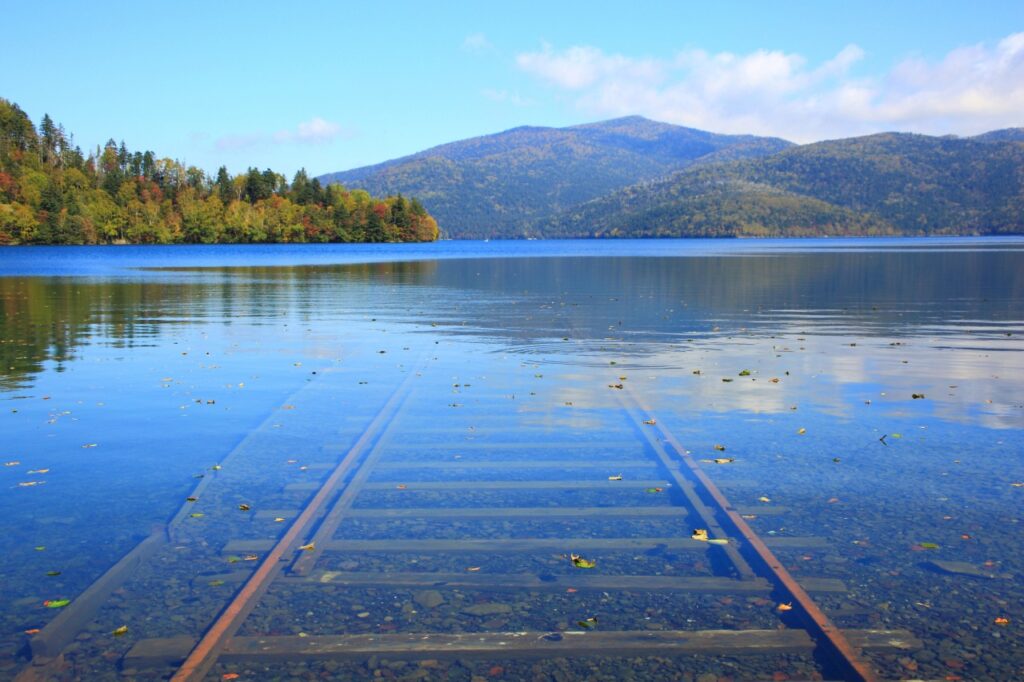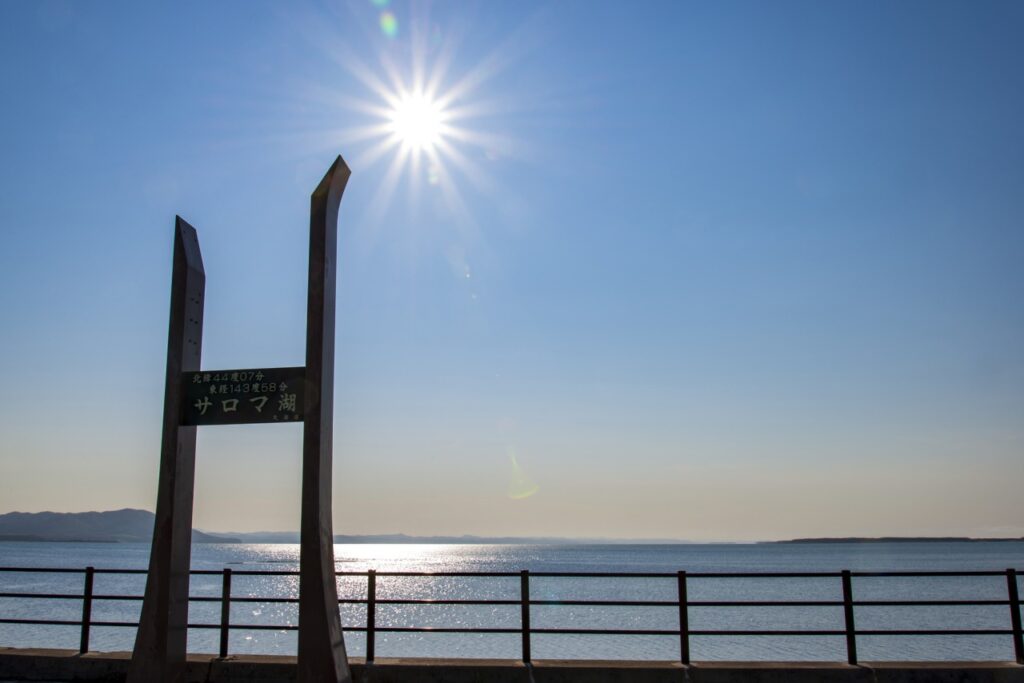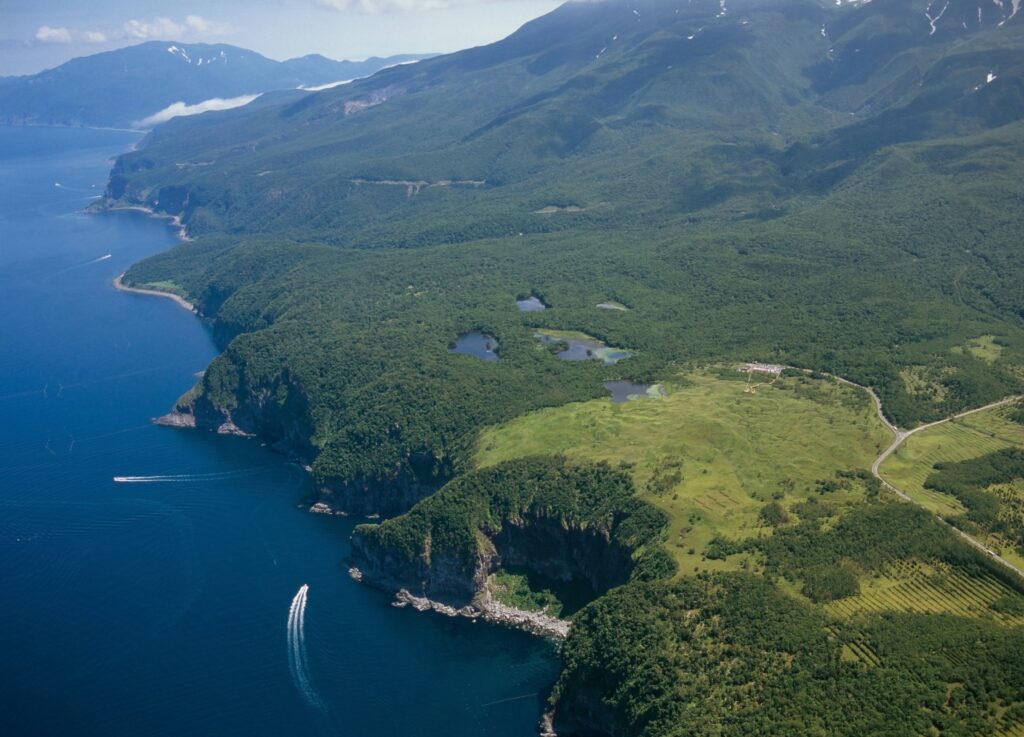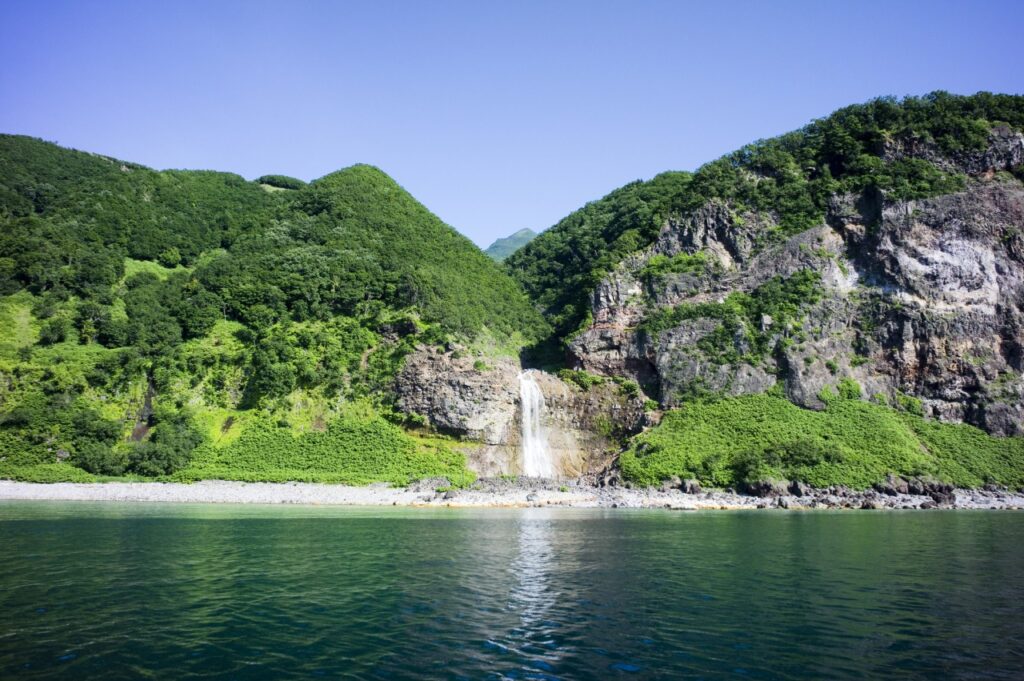east of Hokkaido
Mikuni Pass Observatory


Mikuni Pass” shows its beautiful face in each of the four seasons. It is a spectacular spot where you can see the magnificent scenery of Hokkaido. The name “Mikuni” comes from its location on the border of Ishikari, Tokachi, and Kitami in the old name of the area. Mikuni Pass is located in the vast area of “Daisetsuzan National Park,” and with an elevation of 1,139 meters, it is the highest pass among the national roads in Hokkaido.
Lake Shikaribetsu Lake Bottom Track


Lake Shikaribetsu is also known as “Lake in the Sky” because it is located at the highest elevation in Hokkaido. It is a natural lake located in Daisetsuzan National Park, and its mysterious scenery surrounded by the great outdoors is very attractive. In fact, this rail line is used to pull up the sightseeing boats to land before winter. In winter, Lake Shikaribetsu becomes a subzero world and the lake freezes over, so the best time to visit the lake bottom railway is on a clear day from spring to autumn.
Lake Saroma


Lake Saroma, the third largest lake in Japan and the largest lake in Hokkaido, is long from east to west. The observation deck at the top of Horoiwa Mountain, located almost in the center of the lake, offers a panoramic view of the lake as wide as the eye can see. From the observation deck, you can see the entire lake, from one end to the other, as well as the spit that separates the lake from the Sea of Okhotsk and the Shiretoko mountain range, a view that cannot be seen anywhere else. The unique blue color of Lake Saroma, described as “Saroman blue,” and the Sea of Okhotsk stretching out before you will make you lose track of time. Especially in the evening, both the sky and the lake are beautiful beyond description.
Lake Akan


This caldera lake was created by an eruption about 150,000 years ago. The lake is dotted with four islands: Oshima, Kojima, Yaitaijima, and Chuuluijima. Surrounded by the mountains of Mt. Female Akan and Mt. Male Akan, the lake is rich in nature with Lake Akan Onsen hot springs bubbling up along the southern shore.
Lake Mashu


Lake Mashu, called “Kamuito” (lake of God) in Ainu language, has been revered as a mysterious place. With a circumference of approximately 20 km and a maximum depth of 212 m, Lake Mashu is a caldera lake boasting the world’s highest level of transparency. The deep blue color reflected on the transparent surface of this world-class lake is known as “Mashu blue,” and is the result of the colors of the sky. On a windless day, the blue color is even more beautiful.
Lake Kussharo


Lake Kussharo is a beautiful caldera lake with a circumference of 57 km. It is the largest lake in Akan-Mashu National Park and the second largest in Hokkaido after Lake Saroma. The name is derived from the Ainu word “Kutcharo,” meaning a place where a lake becomes a river and flows out. The Wakin Peninsula protrudes from the southern shore, and the sight of Nakajima floating on the lake is a spectacular sight.
World Natural Heritage Site Shiretoko




Shiretoko is located in the eastern part of Hokkaido, with mountains over 1,000 meters high in the center of the peninsula. Shiretoko is home to endangered species such as the Blakiston’s fish owl and the Shiretoko violet, as well as rare animals and plants such as brown bears and Ezo sika deer on land and sea lions and seals in the sea, showing us the richness of life. Also, we must not forget the drift ice that covers the Shiretoko Sea in winter. The good nutrients carried with the drift ice enrich the sea, salmon grow up, brown bears eat the salmon that come up the river, and their feces and carcasses return to the soil, enriching the forests of Shiretoko. In addition to being a habitat for rare plants and animals, Shiretoko was registered as a World Natural Heritage site in July 2005, the third such site in Japan, in recognition of the ecosystem that connects the sea to the land and mountains.
Abashiri drift ice sightseeing icebreaker Orola




Around the end of January, when the severity of winter increases, drift ice arrives in the Sea of Okhotsk every year. Why not take a one-hour drift ice viewing cruise on the “Drift Ice Sightseeing Icebreaker Orola,” which dynamically breaks up the drift ice as it passes by. The ship is heated for your comfort. The first-floor cabins are unreservedly furnished with sofas facing the sea, and the side deck, which is connected to the cabins, is a comfortable place to sit on a sofa facing the sea. The first-floor guest rooms are unreservedly furnished with sofas facing the sea, and the side deck is connected to the guest rooms, offering the best view of the drift ice from the closest point on the ocean. For those who wish to spend a more relaxing time, we recommend the special guest rooms on the second floor. These are reserved seats where you can watch the ice floes breaking up and moving forward from inside the ship. The sound and impact of the ice floes breaking up is very powerful.
Mount Io-zan


Io-zan, called Atosanupuri (naked mountain) in Ainu language, is an active volcano located south of Kawayu Onsen at an elevation of 512 meters.
The brown surface of the mountain is covered with numerous fumaroles, and the sulfurous white smoke rising from the fumaroles is very powerful. The area is filled with the smell of sulfur. Visitors can get very close to the fumaroles and feel the dynamic nature of an active volcano up close.
Spread out at the foot of the mountain is a large colony of Ezo azalea (a species endemic to Hokkaido that prefers acidic soil). Growing in a harsh environment, they produce beautiful pure white flowers from June to July.
Happiness Station


Happiness Station” is a station with a name that seems to bring happiness to those who visit it. With the catchphrase “From the Land of Love to Happiness,” the station became very popular in the 1970s. The station is now a park, where two diesel cars, the platform, and the wooden station building are on display, preserving the atmosphere of those days. The “Bell of Happiness,” which was installed after the railway line was closed down, is a popular photo spot. Rumor has it that ringing the bell brings happiness, and many tourists visit.
Okhotsk Drift Ice Museum


This is an exhibition hall themed around drift ice and the creatures of the Sea of Okhotsk. The drift ice experience room is kept at minus 15 degrees Celsius, and real drift ice is placed in the room so that visitors can experience the frigid Okhotsk winter throughout the year. Visitors can experience the harsh cold of the Okhotsk winter through the real drift ice in the experience room, which is kept at minus 15 degrees Celsius. The lovely clione, also known as the “drift ice angel,” the balloon fish, and the sea slugs on display will make you smile. From the Tento-yama Observatory, a 360-degree panoramic view of the magnificent seasonal scenery can be enjoyed. The spectacular view from Mt. Tento overlooking the Sea of Okhotsk and the Shiretoko Mountain Range, a World Natural Heritage site, has been designated as a national cultural asset and a “place of scenic beauty.
